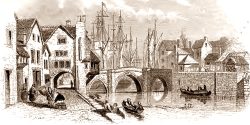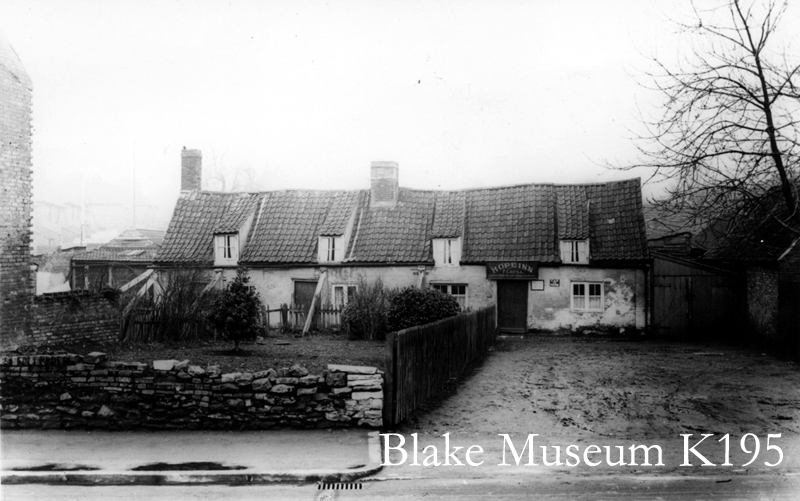
This picture shows the old Hope Inn on Taunton Road. This is clearly an old building, but something has gone very wrong by the time of this photograph. The licensee named above the door is F. Cavill. This tells us that this picture must have been taken between 1928 – the year Frederick Cavill took over from James Barrow – and 1930 – the year the new Hope Inn was built.[1]
This picture tells us there’s some severe structural problems with the old building at this time. On the left hand side three timber struts have been placed to hold the walls up. There is unfortunate bowing along the line of the roof. This will be because the underlying timber ridge and supporting rafters have become misshapen. The four peculiar ‘cat slide’ dormer windows – very unusual features on a building so small – will explain the structural issue here. No builder would intentionally build something so complicated on a new building like this, so what has clearly happened is that this building should have a thatch roof, not tiles. At some point the thatch has been replaced by clay tiles, and presumably the weight of these has caused the supporting timbers to struggle, and the supporting walls to bow outwards. No wonder this building was soon demolished after this picture was taken.
There are enough clues from this photograph to attempt a rough reconstruction of the old building:
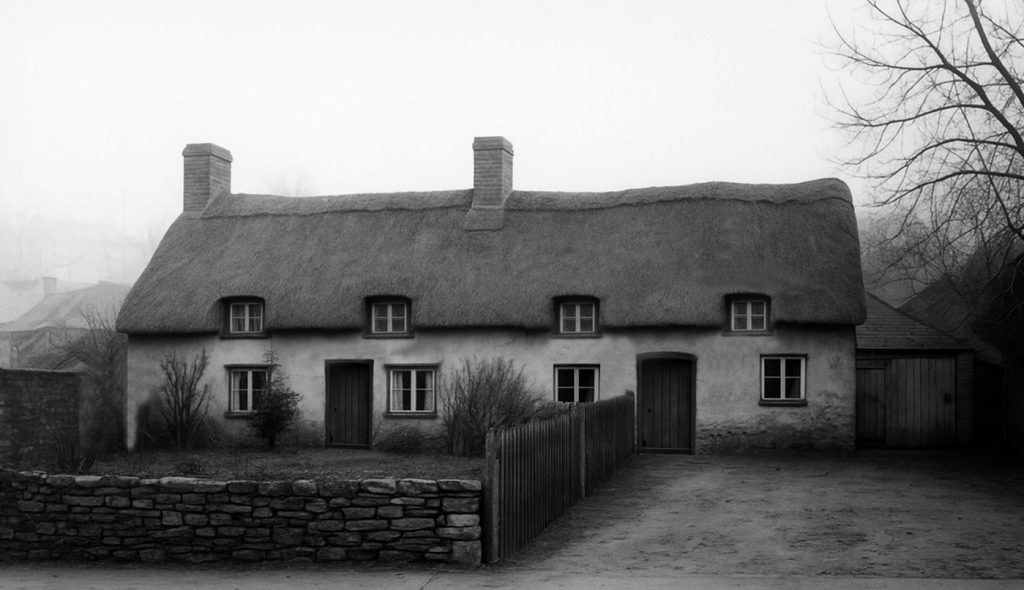
And this reveals something wholly more natural in terms of construction. How old this building was is hard to say. It is clearly two storeys and possibly divided into two cottages, each cottage having a chimney on its south side. That would mean it is post medieval and probably seventeenth century. However, this may have modified an earlier medieval open hall longhouse, given its long shape and the way it is set back so far from the road (especially given that the Taunton Road used to be even further away, originally passing behind the old toll house opposite). In any case, at the time this was demolished, it was certainly one of the oldest buildings in Hamp and a rare survival of an older rural architecture.
History
The property is difficult to trace prior to the nineteenth century. The long plot of land was possibly part of Hamp Manor, although by 1840 it was an independent property, not owned by anyone other than the occupier. When Old Taunton Road was turnpiked in 1730, part of the front portion of the property was possibly hived off for the new toll house. When the New Taunton Road was built in 1830, this would have trimmed off a little more.
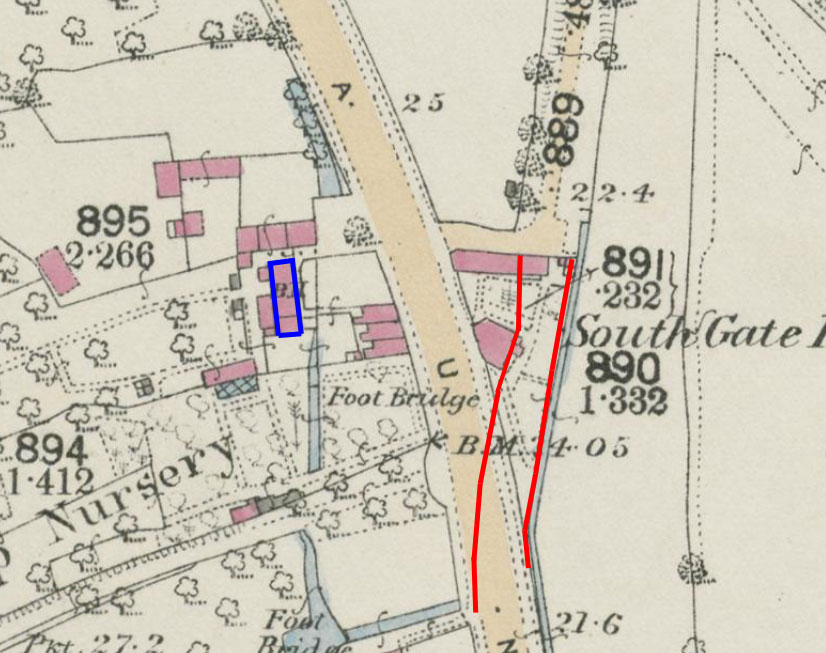
Prior to the 1840s there is no mention of a Hope Inn in Hamp, although reference may later come to light given the lack of sources for Hamp in general. In 1848 an Elizabeth Rogers is mentioned in Hunt’s Directory as a beer seller in Hamp, and some have taken this to mean she was landlady of the Hope Inn, although no one of this name seems to be traceable otherwise, and no indication is given in the directory as to where she was selling.[2]
In the 1840s Tithe apportionment it was owned and occupied by someone with the surname Davey. The property was described as ‘House, Garden and Orchard’ and consisted of one acre, one rood and one perch. The property to the north was owned separately, although would later become part of the Hope Inn lands.
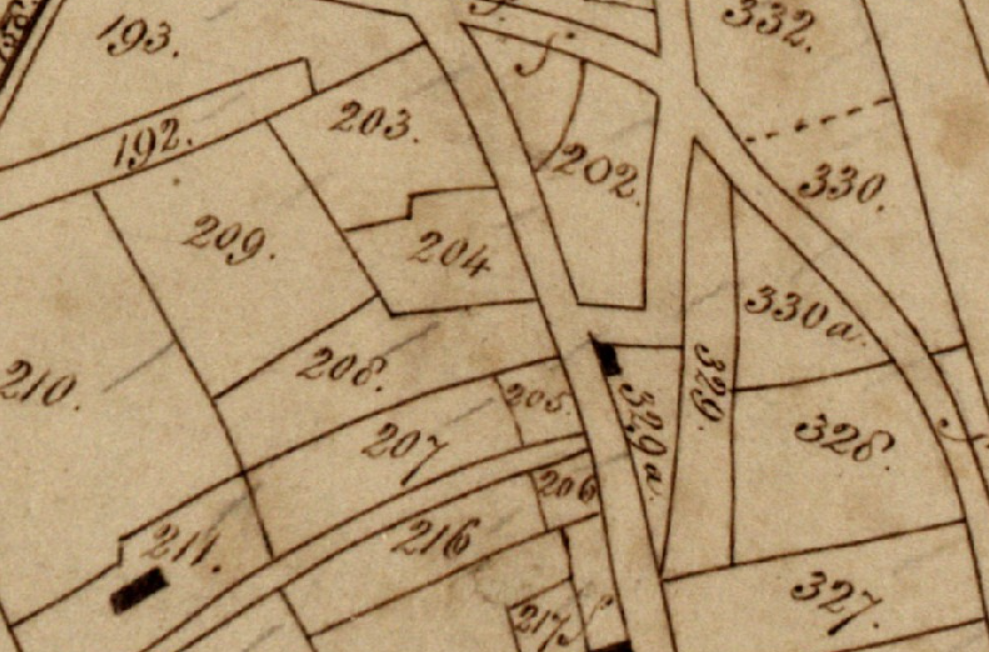
A William Davey is mentioned in the 1851 census for Hamp. He was 51 years old, from Teignmouth in Devon and recorded as a ‘Beer House Keeper’. This meant he sold beer and cider, but was not licenced to sell spirits. It is unclear who was in the property at the time of the previous 1841 census. The Davey’s next door neighbour in 1851 was 85 year old Elizabeth Tamlin or Tambling. She appears in 1841 in Hamp, but although names for Taunton road reoccur between each census, it does not look like the 1841 survey was made in order.
David William’s 1997 Bridgwater Inns Past and Present notes a William Davey recorded as landlord of the ‘Hope and Anchor’ in Hamp in 1851. There was a Hope and Anchor north of the town centre as well, so this may be an error. An anchor was often used as a symbol to denote hope, which may have been the pub sign. According to the Wordsworth Dictionary of Pub Names (2006) the name of Bridgwater’s Hope Inn took its name from a stagecoach that operated between Bridgwater and Taunton. We have not been able to verify that. Anyway, if Elizabeth Rogers was the first landlady, then William Davey quickly followed.
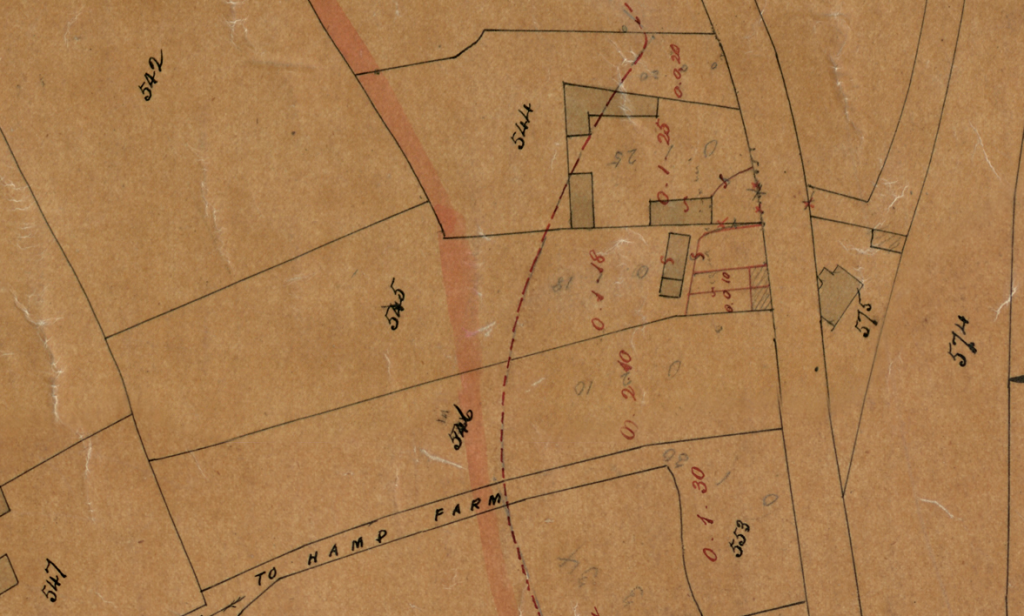
The 1854 Town Plan gives us more detail on the property layout. The red marks indicate changed ongoing at the time the map was plotted, indicating that a bit of land was being set aside for the building of Willow Cottages. Interestingly, as can be seen from the image at the top of this page, the end property of Willow Cottages left joining brickwork, so presumably the intention was to demolish the old cottage at this time to continue the row, but this was not undertaken until 1930 and the later Hope Inn. Either Davey ran out of money or the plan stopped when he either died or moved on.
William Barrow, a mariner and volunteer in the West Somerset Yeomanry, had taken over the property by 1857. When William died in 1887, his son James Stacey Barrow took over. The story of the Barrows’ time in the Hope in is told in James’ biography on the website of the Friends of the Wembdon Road Cemetery. The pub would have been popular with the men working in the nearby brickyards and gas works.
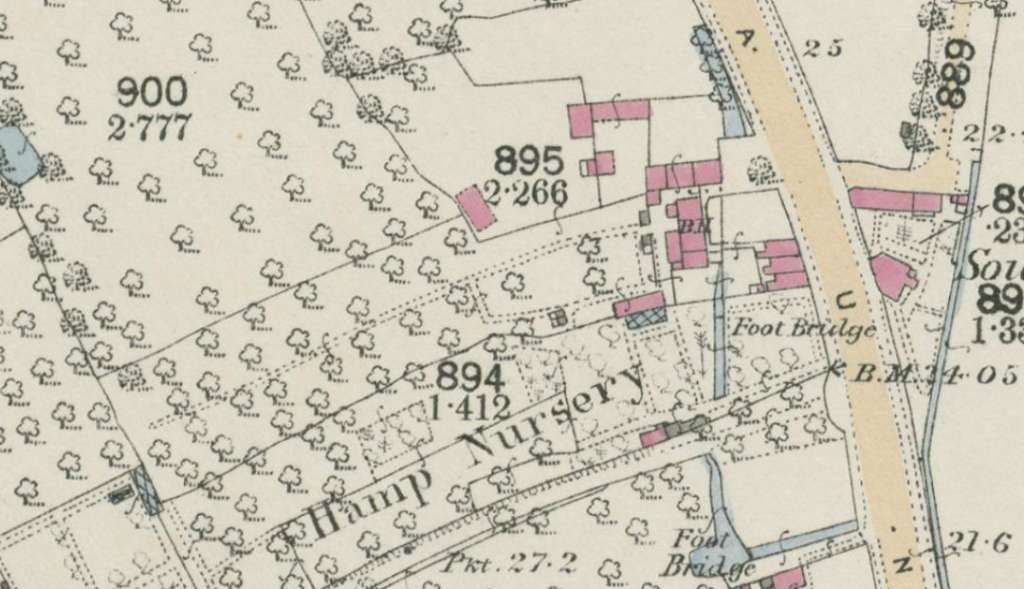
The 1887 25” Ordinance Survey Town Plan for Bridgwater gives us more detail on the property. This shows the property divided, the northern part being the Hope Inn Beer House, the southern part being Hope Cottage, where many of the Barrows lived.
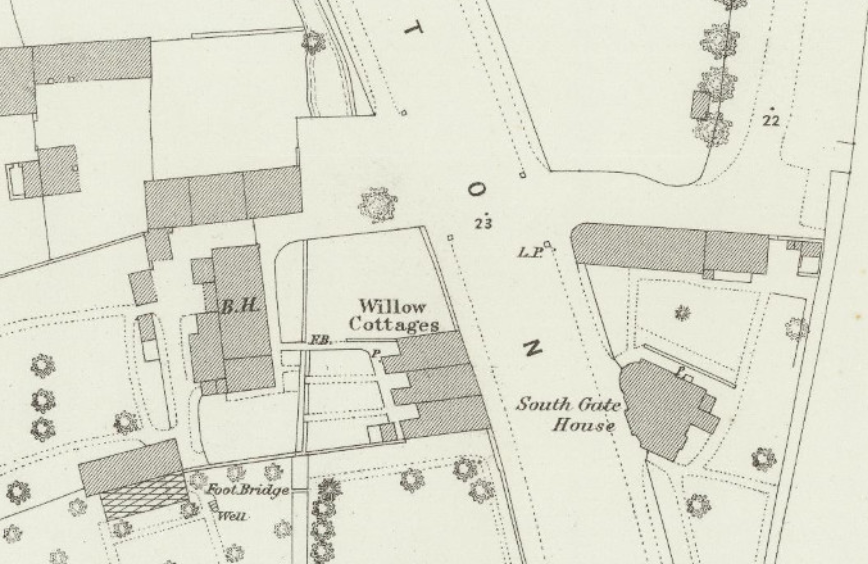
James owned the Hope Inn until his wife Sarah died on the 11th of October 1928, aged 64. After this James sold the inn to the brewers Starkey, Knight and Ford.
The new Hope Inn
Now owned by the brewery, the old Hope Inn was razed to the ground. The adjoining plot of land to the north seems to have been purchased about this time to be added to the Inn. The new buildings seem to have been completed by October 1930, when Mrs Cavill the landlord was advertising for a maid to help in the household and in the bar.[3]
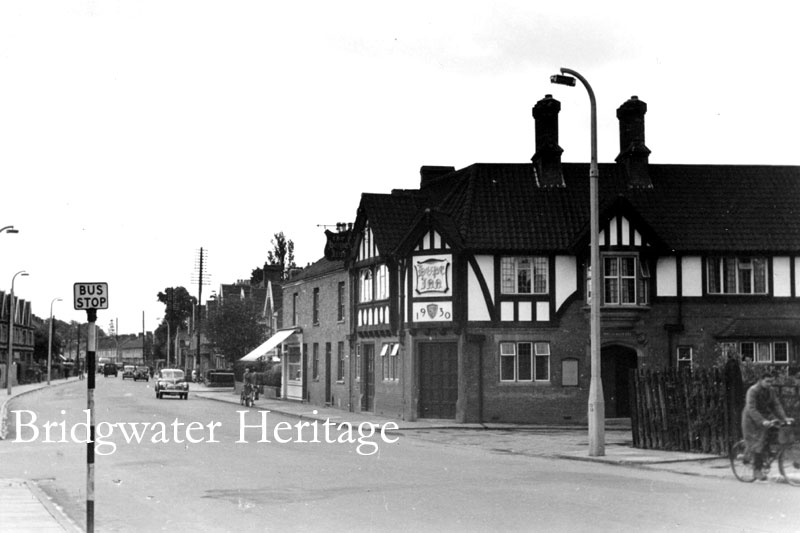
Interestingly the new buildings seem to skirt round the footprint of the old.
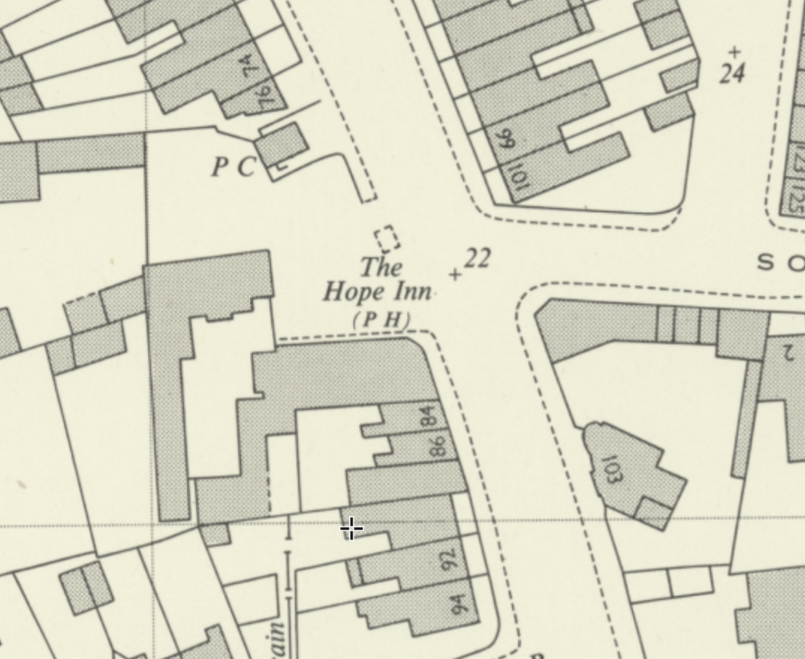
The new Hope Inn was a world away from the old one. This was built in a Tudor Revival style, with half timber style upper storey, ornate chimneys and heavy doors. Although the decoration looked to the past, this was for a thoroughly modern purpose. As well as the modern bar, cellars, accommodation and skittles alley, the new Hope Inn included garages. The inn was conceived to cater to motorists, either stopping for lunch on their travels, or in need of overnight accommodation. This was in a time when Bridgwater was an important stop for tourists heading into the West Country.
Below the old-world style ‘Hope Inn’ text on the side of the building was the date 1930 and the monogram for Starkey Knight and Ford. On the end of the garage building was the brewery’s black horse.
The new facilities at the Inn came at an important time as Hamp was rapidly expanding with new council estates. The worth of the new facilities can be seen in 1935, when a Carnival Club formed there, the Hope Inn C.C., who went onto win the road procession in 1938. They would move to the Three Crowns in 1977 and renamed ‘Crusaders’ – Bridgwater’s oldest carnival club.[4]
An interesting picture of the old Hope Inn from the west, dating to the 1940s or 1950s, can be seen here.
The subsequent landlords of the Hope Inn can be traced in Jane Mann’s Bridgwater and Beyond Pubs, Clubs and Inns, Past and Present (2018). Frederick Cavill stayed the longest, from 1929 to 1976. Starkey Knight and Ford were taken over by Whitbread & Co. in 1962. The last landlord was Paul Russell in 2013, the year the Hope Inn closed.
This was just at the time when such inter-war motoring mock-Tudor pubs were becoming recognised as important heritage assets, although the fate of the Hope would be a depressing example of the loss of many of Bridgwater’s old pubs at this time.
After the brewery closed the Hope Inn, the property was sold to Land Promotions Ltd, developers. A large hole was opened in the roof, allegedly to speed the deterioration of the buildings, and as soon as October 2014 they applied for demolition. This was refused in November 2014, the reason given by Sedgemoor District Council being that ‘permitted development’ rights (to demolish buildings) do not apply if, “the building has been rendered unsafe or otherwise uninhabitable by the action or inaction of any person having an interest in the land on which the building stands and it is practicable to secure safety or health by works of repair or works for affording temporary support”. It is evident that the building has been rendered uninhabitable (and possibly unsafe) by the actions of those with in an interest in it and it is further evident that repair work is practicable to reverse those actions.’
An appeal was raised in April 2015, which was also rejected. However, in December 2015 a second application for demolition was made, which was this time granted, a climb down by the district council on its previous ruling, who were under considerable pressure by national government to fulfil housing quotas. The Hope Inn was demolished in 2016.
Land Promotions were also responsible for the demolition of the Black Horse Inn in Rhode Lane and the Pig and Whistle in 2014, two other pubs sold off by the brewery. See the Westover website for various articles from the time.
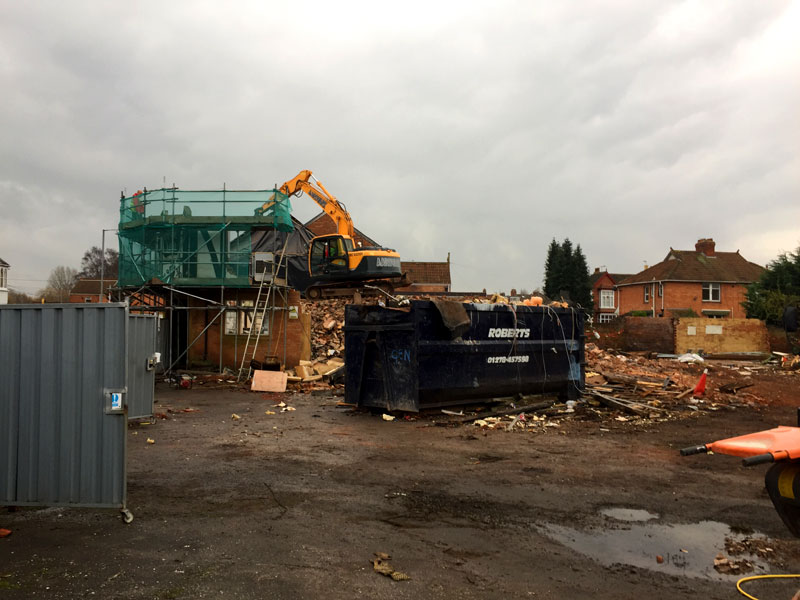
Miles Kerr-Peterson 24 May 2025
with thanks to Clare Spicer for materials on the old Hope Inn and the Barrows.
If you have any additions to the history, or pictures, especially in the 20th century, please get in contact.
Revised 11 October 2025.
[1] Squibbs’ History, image number 188 gives the date as 1910, but this is an error.
[2] Reference from Jane Mann’s Bridgwater and Beyond Pubs, Clubs and Inns, Past and Present (2018).
[3] Western Morning News, 16 October 1930
[4] https://www.bridgwatercarnival.org.uk/club/crusaders-carnival-club/
